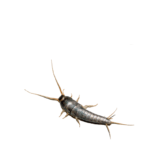- Aramco Vendor - 10106827
- SABIC Vendor - 11052133
- SEC Vendor - 5021221
- Spark Vendor - 000629
- D&B DUNS - 448983633
Request Call Back!
Service Categories
Book Appointment
Toll-Free
Call Us at
Services
Best Pest Control has been delivering professional pest control services since 2014. Our pest control services are aimed at providing sustainable pest control solutions to commercial or industrial sites.
You will no longer be bothered by insects and rodents in your home or business thanks to our non-toxic techniques. We ensure that your family and pets are safe from pests thanks to our highly qualified exterminators. Our pest control services are tailored to residential homes.
Integrated Pest Management (IPM) enables us to accomplish our mission. A core commitment is to deliver the best services to make the world a better place. we work transparently and with a purpose.
As laws and regulations are becoming more restrictive, business practices seemed to be narrowing. As a reason, reap the benefits of Best Pest Control’s expertise, competence, and unparalleled quality.
Visitors can start by filling out this questionnaire. Would you like to ask a question about a remedy or business that wasn’t answered above? Please feel free to contact us if you have any questions.
GENERAL PEST CONTROL
RODENT CONTROL SERVICE
BED BUGS CONTROL SERVICE
FLYING INSECT CONTROL / FOGGING SERVICE
REPTILES CONTROL SERVICE
FUMIGATION SERVICE
TERMITE CONTROL SERVICE
STRAY ANIMAL CONTROL SERVICE
BIRD CONTROL
DISINFECTION / STERILIZATION SERVICE
OTHER SERVICES





















































